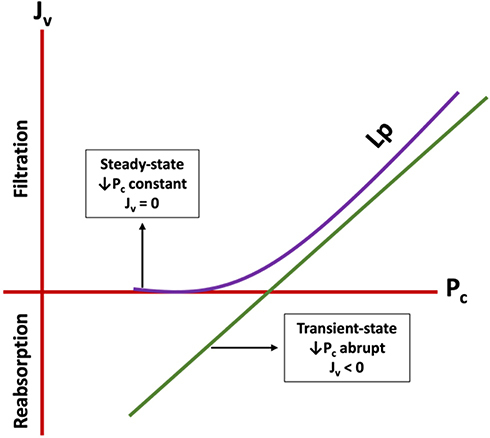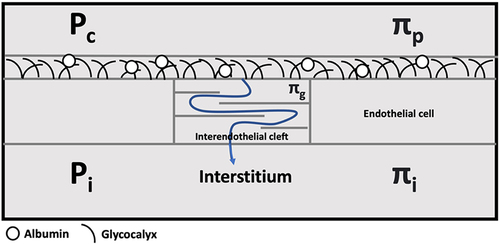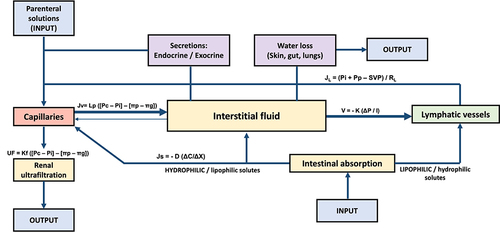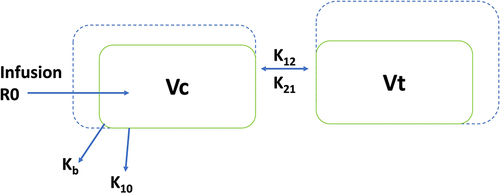Figures & data
Table 1 Hemodynamic Factor According to Vascular Area
Figure 1 Classical Starling principle. Relationship between transvascular flow (Jv) and hydrostatic pressure (Pc); when Jv = 0, the hydrostatic and oncotic pressure difference of the intravascular and interstitial space reach an “equilibrium” (ΔP = σΔπ), which results in the absence of vascular leakage. When Pc < σΔπ there is fluid reabsorption.

Figure 2 Revised Starling’s principle. In the transient state with abrupt reduction of Pc (green line), Jv < 0 when Pc < σΔπ and there is fluid reabsorption. In the steady state with constant maintenance of Pc (purple line), Jv = 0 when Pc < σΔπ contrary to the expected reabsorption.

Figure 3 Interendothelial space and clefts. The revised model of the Starling Principle proposes the glycocalyx as a major determinant in the maintenance of the Δπ in the face of changes in Pc. The arrow indicates the path of flow of solvent and solutes through the interendothelial cleft.



